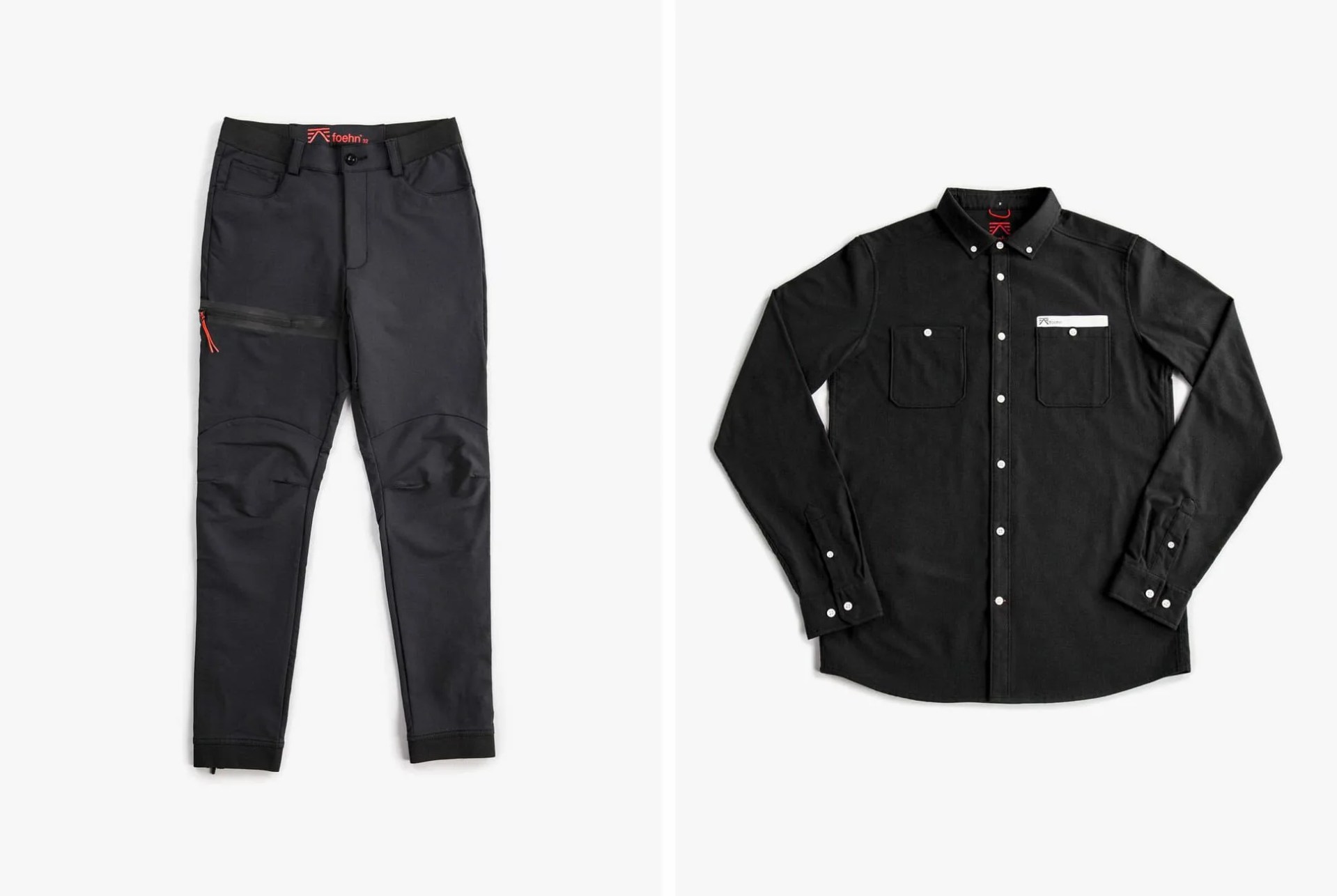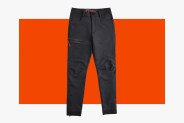Rock climbing isn’t cool. Impressive, imposing, perhaps even insane at times, sure. But not cool, not really. Maybe it’s too wrapped up in technical equipment, or maybe it’s a matter of demographics. Whatever the reason is, Anthony Boronowski wants to change that. And he, along with his partner and co-founder Ingrid Sirois, are doing just that with their brand Foehn.
Unless you grew up following the earlier days of freestyle skiing, you won’t have heard Boronowski’s name before. He was raised in Vancouver, where he was able to procure sponsorships from brands like Oakley and Armada from an early age. Boronowski worked on his first movie on Saturdays and Sundays when high school wasn’t in session. (His filmography includes Oakley’s 1042 and Poor Boyz Productions’s X=10.) He was flown to Japan on someone else’s dime by age 17.
Boronowski skied professionally for eight years, and it was also during that time that he started his first brand, called Joystick, making ski poles, gloves and other accessories. “I didn’t have a clue what I was doing at all,” he admits, “but it was a good learning process.” Learning by experiment seems to be Boronowski’s forte though; after becoming disenchanted with life as a professional athlete, he sold Joystick, giving himself a safety net while he experimented designing and building bags and outerwear. “Going skiing in all the stuff that I had made myself was a big deal for me,” he says.
Boronowski landed a design job at Lululemon and after that, began creating apparel for one of his former ski sponsors, Armada. Recently though, he’s left his full-time role there to start his own design agency, which does work for ski, fishing and general outdoor companies.
And then there’s Foehn. The brainchild of Boronowski and his partner, Ingrid Sirois, Foehn is a rock climbing apparel brand, though you wouldn’t know it if you spotted one of its products in a city. Right now there are only four items — a down pullover, a flannel and two pants — and Boronowski created each to perform at the crag but blend in around town. In conversation with Boronowski, it’s clear that Foehn presents a challenge that’s different from his other design work. He and Sirois know precisely what they want, and they’re working carefully to get it there (while juggling lots of other contract work).
The city-to-mountain trend has diffused into outdoor apparel for a few years now, but most companies, from The North Face to Patagonia, still make outdoor gear that looks good enough to wear in town after or before activity too. Foehn doesn’t make that distinction; its apparel is simultaneously for both of these disparate environments. It doesn’t “look good enough, too,” it looks good, period. It’s a subtle distinction and, as our recent conversation with Boronowski revealed, a fine line.
Q: Why did you leave professional skiing?
A: I wasn’t happy skiing. Being a pro athlete isn’t all it’s cracked up to be, there’s a lot of pressure. It’s a complex thing because your self worth and value is judged on your athletic performance, which is kind of bizarre. To put it into perspective, can you imagine if people valued you based on how good of a writer you are and not how good of a human you are? I was just ready to be done. And I didn’t know what I was going to do to be honest. It wasn’t easy to figure that out.



